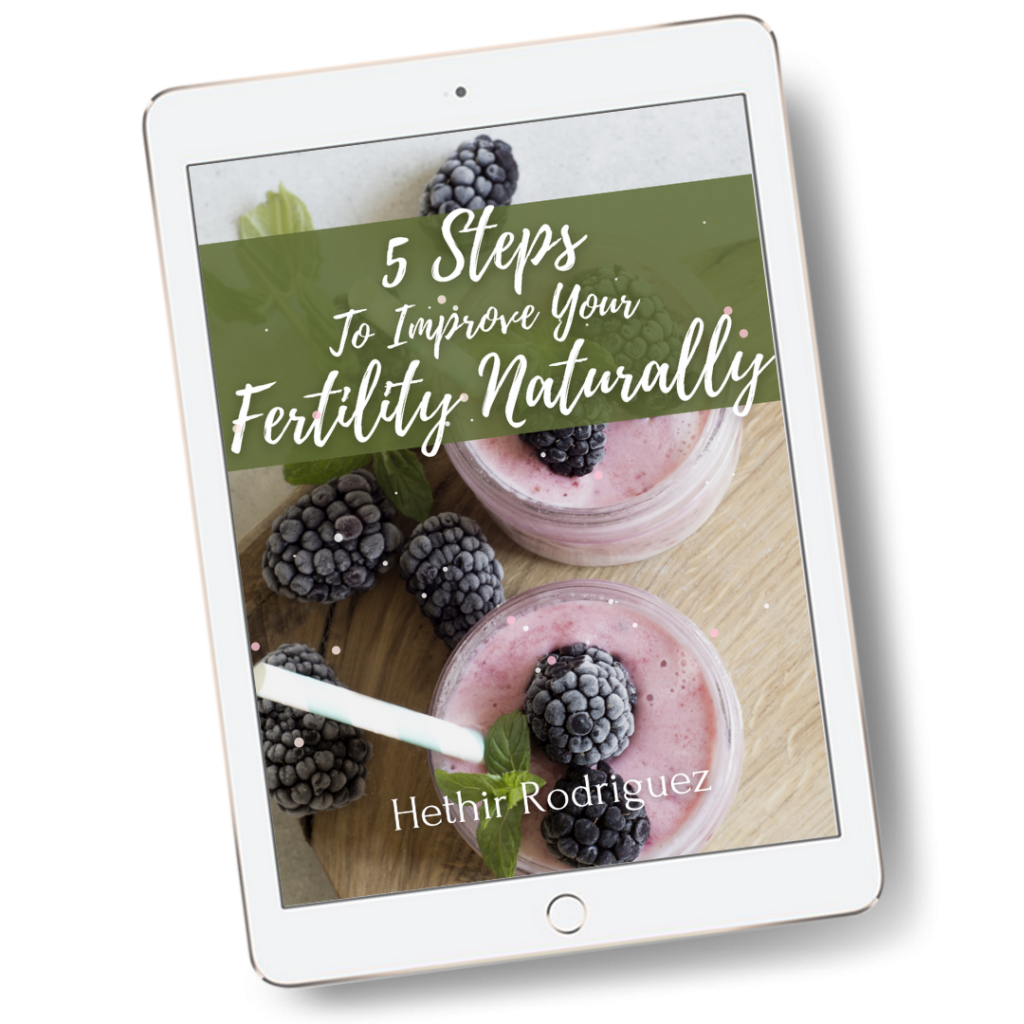Do you have multiple fertility-health issues? It’s not uncommon for people to have a few problem areas they’re addressing like egg quality concerns, endometriosis, low sperm count, PCOS or more.
In these situations, we understand how challenging it is to figure out where to begin and create your path going forward. This article shares a starting point, suggestions for what to do if you have multiple fertility issues and you’re trying to conceive.
Step 1. Research medical testing and options. Testing gives you the opportunity to better understand what you’re facing. Further, some fertility issues benefit from or require medical treatments, or will best benefit from a combination approach (medical & natural). Here are just a few examples:
- Anatomical issues like septate uterus, cervical incompetence, blocked fallopian tubes, severe endometriosis, varicocele, forms of azoospermia, etc., may require surgery or other treatment to help restore fertility or chances for a healthy conception. In many cases, modern medical advancements can help limit recovery time and risk of complications.
- Reproductive infection — PID, STI’s, Bacterial Vaginosis, Prostatitis, etc. — may require working with a medical doctor and a course of antibiotics. In fact, skipping treatment could damage your fertility. After the infection is cleared, that would be the time to explore natural therapies for fertility support.
- Lapsed time since previous tests. If you haven’t had any testing for a while and are unsure of your hormone status, schedule an appointment for a recheck. A change in thyroid health or other hormone levels could be holding you back. Once you know your hormone status, you will be better equipped to address it naturally or with a combination approach.
- You continue to struggle to conceive. If you have not seen improvements in your reproductive wellness or conceived naturally, even after working with natural therapies for a very long time, it could be time to consult with a reproductive endocrinologist (RE) and learn about other options to help you achieve your goals.
Step 2. Start by following a total-body health approach. Fertility is an expression of the whole body’s health and vitality. Diet and lifestyle changes re-energize the body, have anti-aging effects, and make a tremendous difference in how a fertility-health issue affects someone. They are also valuable for those planning medical fertility procedures and may make them more tolerable and/or influence rates of success.
- Review your diet and lifestyle for areas you can improve! Learn more about the Fertility Diet. A 2007 Harvard Study in the journal Obstetrics & Gynecology that followed women who used a combination of five or more lifestyle factors, including changing specific aspects of their diets, found they had a more than 80% less relative risk of infertility due to ovulatory disorders compared to women who engaged in no diet/lifestyle changes.
- Don’t skip Exercise! Regular, low impact exercise recharges health and enhances the results of your fertility program.
Step 3. Work on your most pressing issue first. Some people find secondary problems or symptoms are improved if you address your most challenging area first. Here are just a few examples:
- Start with a diagnosed health issue. Many fertility-health problems are especially responsive to dietary and lifestyle improvements, and specific natural programs – herbs, nutritional supplements and natural therapies.
- Review diet triggers. Many symptoms can be triggered by certain foods. One example is estrogen dominance. If you been diagnosed with an estrogen-dominant fertility health issue, or have symptoms of estrogen dominance (swollen tissues, cramps, PMS, fibroids, endometriosis, etc.), take time to review your diet for triggers. Triggers of estrogen dominance symptoms can be:
non-organic animal foods
GMO grains
dairysoy
caffeine
red meatEliminating or significantly reducing these foods can help alleviate symptoms. In addition, high stress can be a cause of estrogen dominance. Keep your stress low to improve your fertility chances and allow your hormones to come back into balance.
- Work to manage chronic reproductive pain (common with large fibroids and endometriosis, PMS, etc.). Once pain is controlled, the body may respond better to other therapies you’re using. The body heals faster when the inflammatory response normalizes. Work with your health practitioner for your best choices. Natural therapies can help too. Learn more: Fertility Pain Relief With Herbs.
Step 4. Find the right natural fertility program. Educating yourself on the herbs, nutritional supplements and natural therapies for the issue(s) you’re faced with is empowering. Working with an experienced health practitioner is another excellent choice. Most people benefit from having personalized guidance and being able to share feedback and questions with someone who understands their history and challenges. Build your own fertility team (herbalist, acupuncturist, RE, therapist) to work with you in all of the areas where you want support. We offer Fertility Consultations for help in creating a complete program based on your personal history and needs.
Find What Works For You
When it comes to having multiple fertility challenges, there is no one program that works for everyone. At the end of the day, your program is about you. You are really the “X factor” in making your program work! Do your best to stay open-minded and patient (natural therapies take time!), but also listen to your gut.
If you feel like you need to make a change in your program, share your questions and ideas with your fertility team. Do the research and the answers will often present themselves.
Additional Resources:
How To Create a Healthy Foundation for Fertility
The Fertility Foundation Kit: Supplements For Healthy Fertility
Combining Natural & Medical Approaches to Fertility: A How-to Guide
- Benskin, L. (2015) Pain Slows Healing. Retrieved from: http://www.polymem.com/articles/Benskin%20Pain%20Outline%20for%20VNAA%20Webinar%20FINAL.pdf
- Infections of the Reproductive System. (2015). Retrieved from: https://clinicalgate.com/infections-of-the-reproductive-system/
- Myers, A. (2018). 9 Causes of Estrogen Dominance and What To Do About It. Retrieved from: https://www.amymyersmd.com/2018/02/9-causes-estrogen-dominance/
- Rodriguez, H. (updated January 7th, 2019). Harvard shows 80% Reduction in Infertility From Natural Lifestyle Changes. Retrieved from https://natural-fertility-info.com/harvard-shows-80-reduction-in-infertility-from-natural-lifestyle-changes.html
- Septate Uterus. (2018). Retrieved from: https://www.healthline.com/health/septate-uterus





